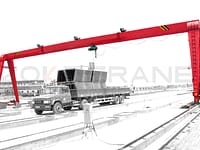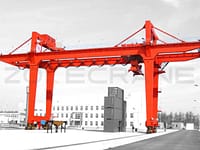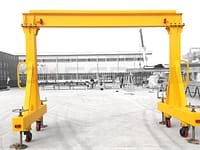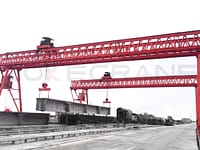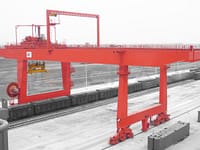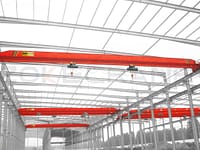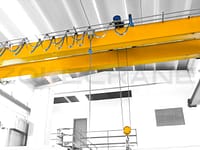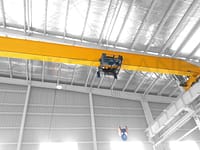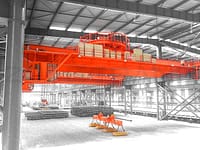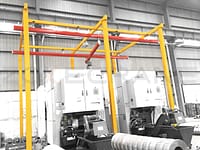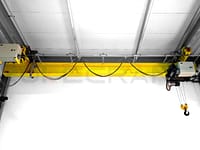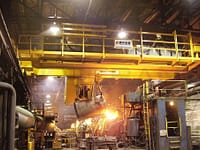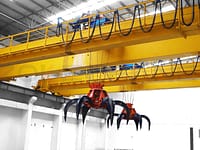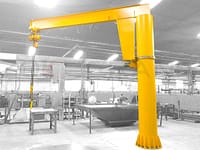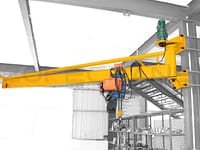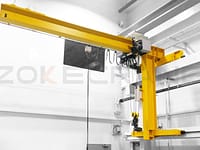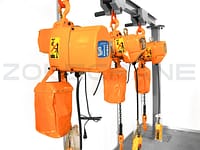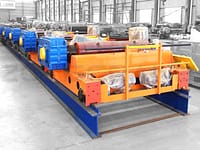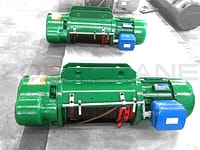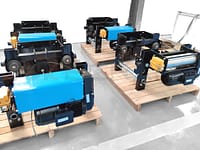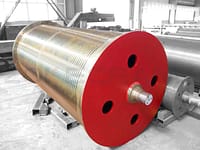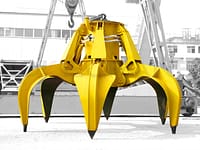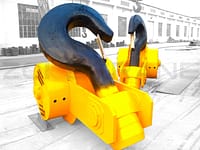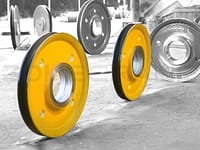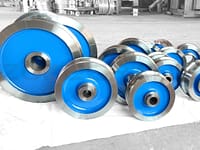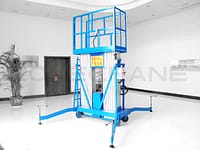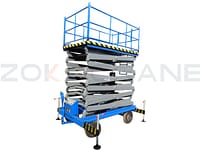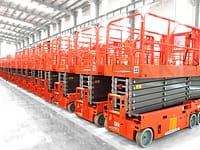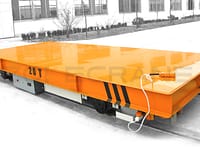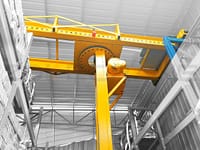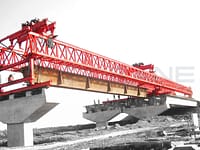Overhead cranes are powerful machines widely used in industries and construction sites for lifting and moving heavy loads. They consist of various components that work in harmony to ensure safe and efficient material handling operations. This article provides a comprehensive overview of the three basic components that form the foundation of an overhead crane.

Bridge
The bridge, also known as the crane girder, is the primary horizontal beam spanning the width of the working area. It serves as the main support for the other components of the crane. Typically, the bridge is constructed using steel beams or trusses to provide strength and stability. The ends of the bridge are supported by end trucks or end carriages, which contain wheels or tracks that allow the crane to travel along the length of the bridge. The bridge is responsible for the lateral movement of the crane, enabling it to reach different positions within the working area.
Hoist
The hoist is the lifting component of the overhead crane and is responsible for raising, lowering, and transporting loads. It consists of a motorized drum or chain mechanism that spools or unspools a lifting medium, such as wire rope or chain, to move the load vertically. The hoist is equipped with a hook or other lifting attachments that securely engage the load. It may also include a trolley or crab mechanism, which runs along the bridge, allowing the hoist to position the load horizontally. The hoist's design and capacity depend on the specific requirements of the lifting application, including the weight of the load and the desired lifting speed.
Controls
The controls of an overhead crane enable the operator to maneuver and control the crane's movements accurately. These controls are typically located in a cab or control panel near the crane or can be operated remotely for enhanced safety and convenience. The controls consist of buttons, levers, or a joystick that provide commands for the crane's various movements. They allow the operator to move the crane forward and backward along the bridge, raise or lower the load, and control the lateral movement of the hoist and trolley. Modern overhead cranes often feature advanced control systems with safety features such as limit switches, overload protection, and emergency stop buttons to ensure safe and precise operation.
Additional Features and Accessories
In addition to the three basic components, overhead cranes may incorporate additional features and accessories to enhance their functionality and safety. These include safety devices like load sensors, anti-collision systems, and emergency backup power systems. Limit switches are employed to prevent the crane from traveling beyond predefined limits or to stop the hoist at specific heights. Festoon systems provide power and control to the crane by managing the cables and wires connected to the moving parts. Furthermore, overhead cranes can be equipped with various lifting attachments such as hooks, grabs, magnets, or specialized fixtures depending on the specific material handling requirements.
Understanding the three fundamental components of an overhead crane—the bridge, hoist, and controls—lays the groundwork for comprehending the complex machinery involved in material handling operations. Each component plays a crucial role in ensuring the safe and efficient movement of heavy loads. By combining these components with additional features and accessories, overhead cranes provide an indispensable solution for numerous industries, enabling them to handle their lifting and transportation needs with precision and reliability.
